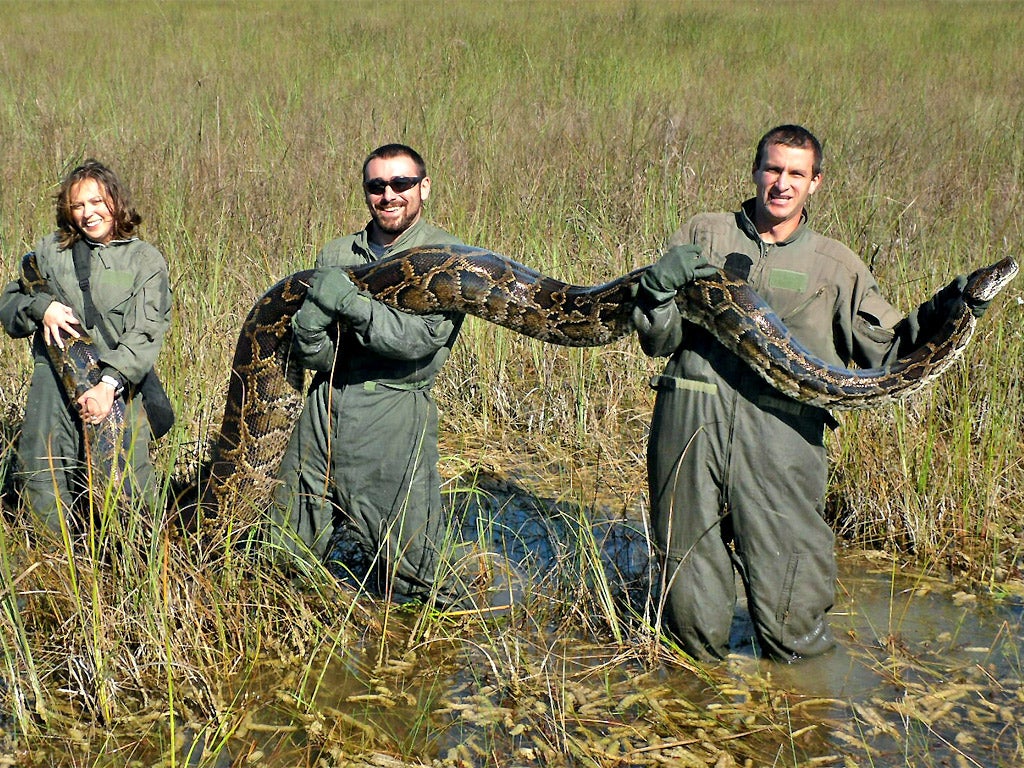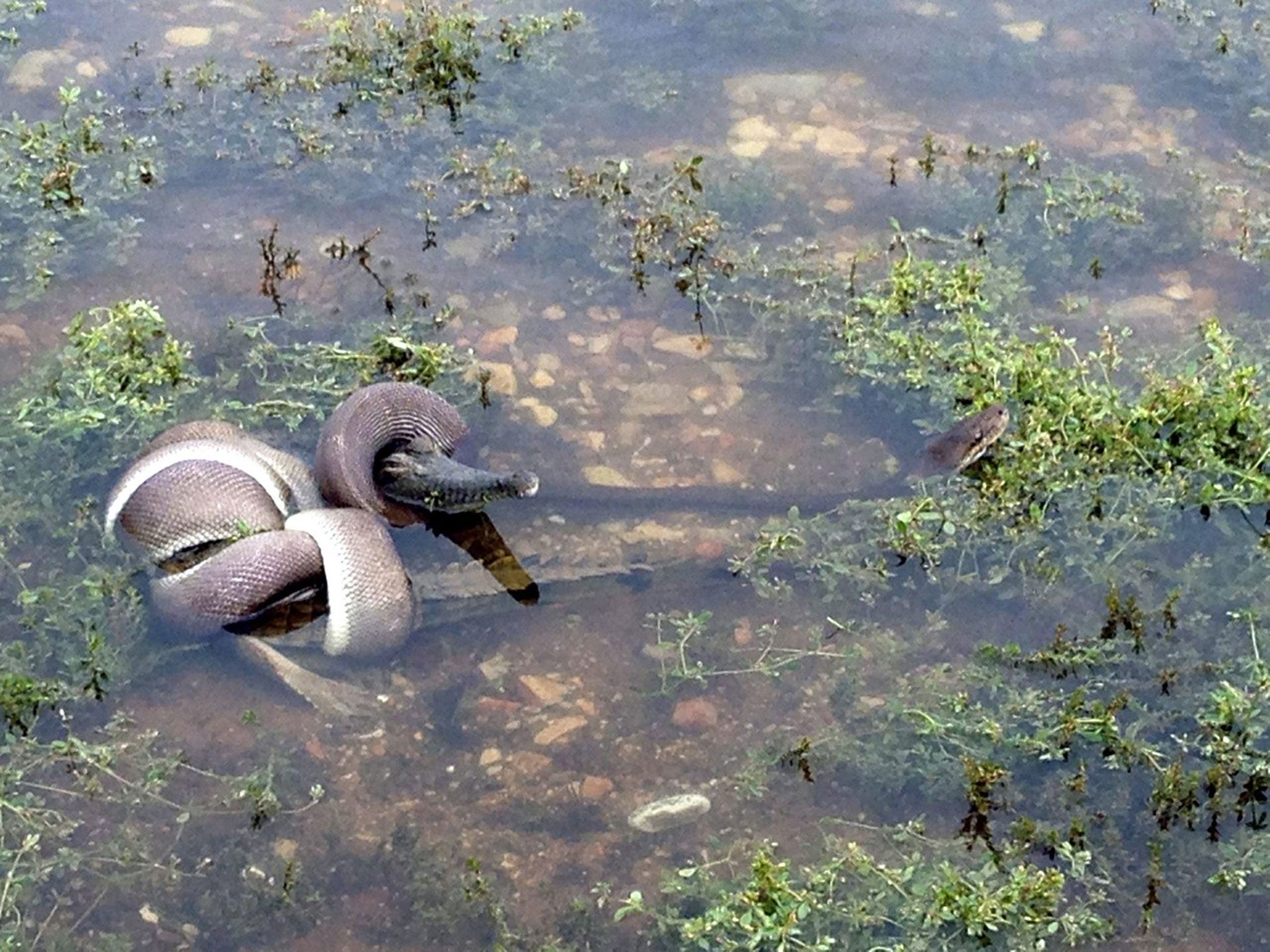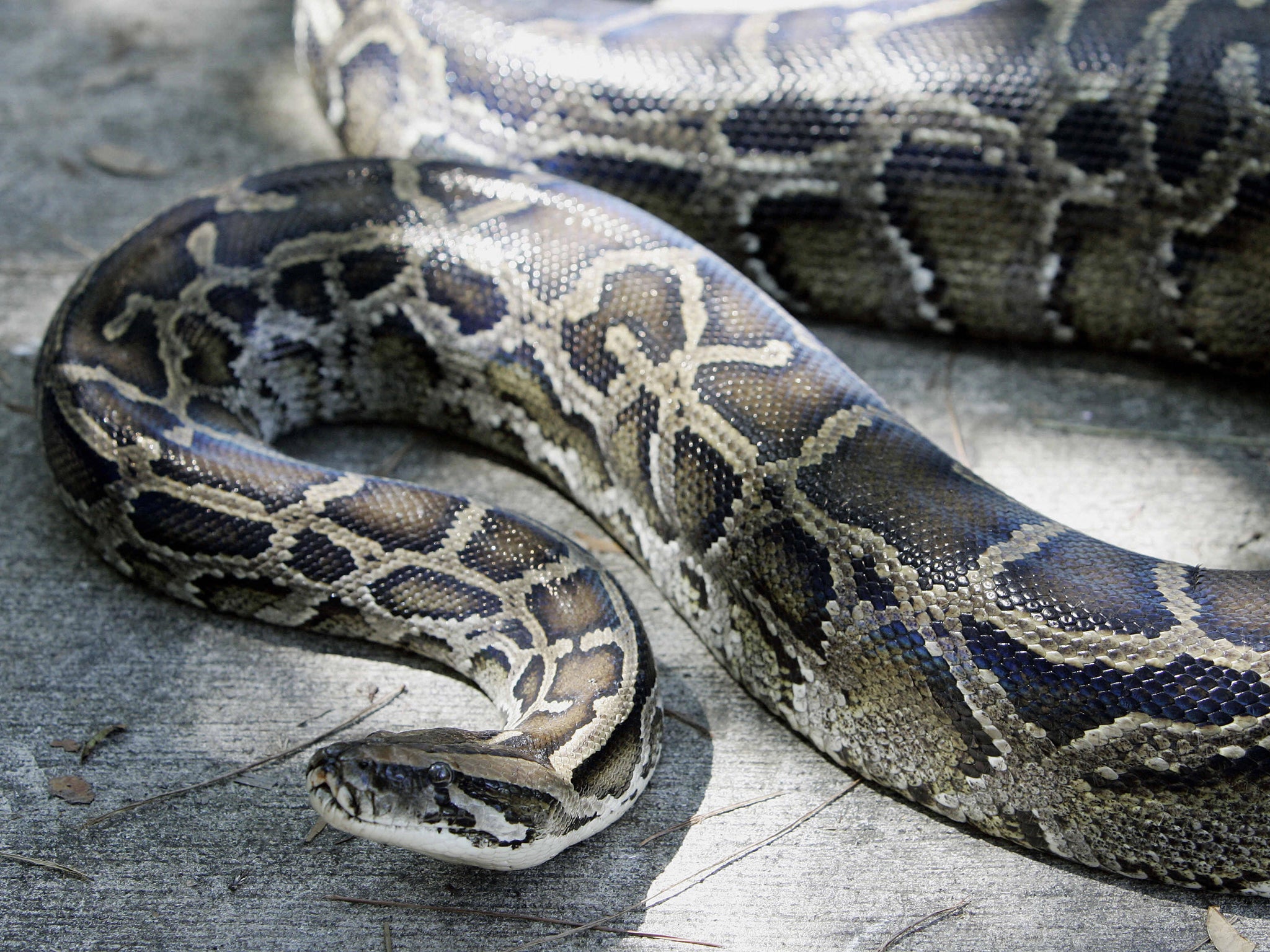Scientists warn of homing pythons: Experts discover giant snakes ‘have compass instinct’
New study has implications for authorities removing snakes in Florida – only to see them come straight back

Your support helps us to tell the story
From reproductive rights to climate change to Big Tech, The Independent is on the ground when the story is developing. Whether it's investigating the financials of Elon Musk's pro-Trump PAC or producing our latest documentary, 'The A Word', which shines a light on the American women fighting for reproductive rights, we know how important it is to parse out the facts from the messaging.
At such a critical moment in US history, we need reporters on the ground. Your donation allows us to keep sending journalists to speak to both sides of the story.
The Independent is trusted by Americans across the entire political spectrum. And unlike many other quality news outlets, we choose not to lock Americans out of our reporting and analysis with paywalls. We believe quality journalism should be available to everyone, paid for by those who can afford it.
Your support makes all the difference.Giant Burmese pythons have “homing” instincts allowing them to accurately navigate over large distances, scientists have discovered.
The enormous snakes are capable growing up to lengths of more than 17 feet (5m) and swallowing large deer and alligators, causing serious ecological issues in Florida’s Everglades national park.
With their camouflaged tan colouring and powerful, heavy builds, the reptiles can be difficult for pest control authorities to track down and capture – yet new research has emerged suggesting this may be only half the battle.
According to a study published in the Royal Society journal Biology Letters, pythons captured in the Everglades and moved to other suitable habitats were able to navigate over at least 23 miles back to their homes.
Researchers captured 12 snakes and fitted GPS tracking devices under their skin. Six were then released in the same place as control subjects, while the other six were relocated between 13 and 23 miles away.
Observing and recording the pythons’ movements afterwards, scientists found that the re-homed snakes headed straight back for their capture locations, moving both quicker and more directly than the control specimens.

“We were very surprised,” lead author Shannon Pittman told BBC News.
“We anticipated the pythons would develop new home ranges where they were released. We didn't expect them to orient back to their capture locations.
“This is evidence that Burmese pythons are capable of homing on a scale previously undocumented in any snake species.”
“The snakes maintained their oriented movement over the course of a relatively long time, between 94 and 296 days,” said Kristen Hart, a study co-author. “This indicates that not only do pythons keep their long-term movement goal in mind, but also that they were highly motivated to get back home.”

Experts said the research implied other snake species are likely to also have previously-undiscovered homing instincts.
Other reptiles, like sea turtles, have previously been shown to have a magnetic “map” sense that allows them to determine their position in relation to home.
The study said pythons must also have a “compass” sense guiding their homing movement, which could be aided by the stars, magnetic fields, olfactory (smell) or polarised light cues.
The giant snakes have become one of the leading predators in the Everglades after establishing themselves several decades ago, and have been blamed for a massive drop in mammal populations.
“Understanding navigation in invasive species improves the ability to control populations and limit dispersion,” said Ms Hart.
Join our commenting forum
Join thought-provoking conversations, follow other Independent readers and see their replies
Comments